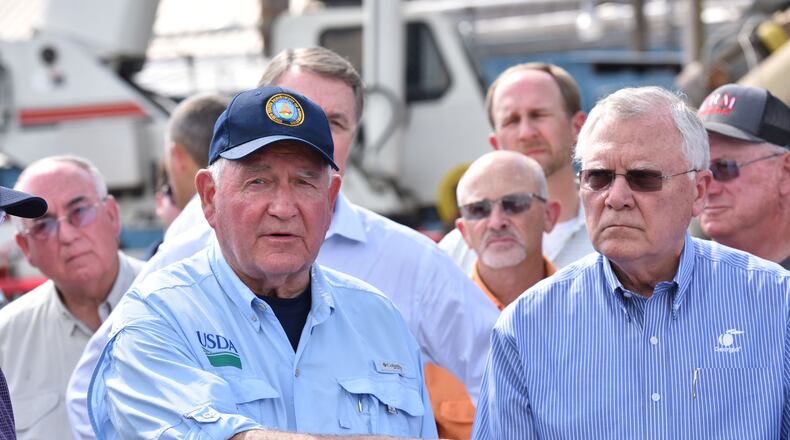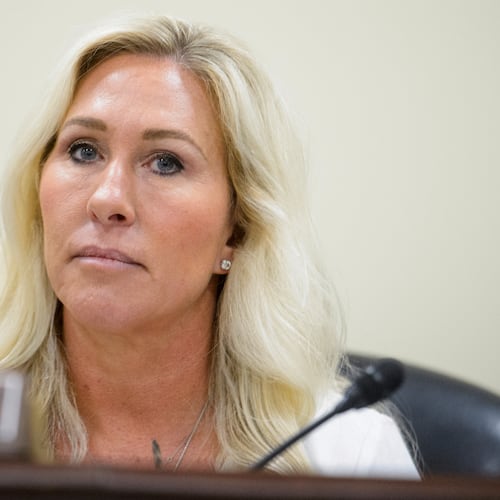Federal relief money is on its way to Georgia, nearly 11 months after Hurricane Michael uprooted crops and left a trail of destruction at many farms in the state’s Southwest corner.
Agriculture Secretary Sonny Perdue announced Monday that his federal department would begin accepting applications for more than $3 billion in aid that Congress set aside for farmers in a disaster relief package signed into law earlier this summer.
Farmers in roughly 80 Georgia counties that were designated presidential emergency disaster zones in 2018 are eligible for the money, as well as the victims of floods, tornadoes and other natural disasters over the last two years, Perdue said. That includes Hurricane Dorian, which plowed through the Bahamas and the Southeast coast last week.
“Although these disaster program benefits will not make producers whole, we hope the assistance will ease some of the financial strain farmers, ranchers and their families are experiencing,” Perdue said.
The agriculture money is the first major chunk of disaster relief funding to be released since President Donald Trump cleared a $19 billion emergency relief package in June, ending eight months of partisan gamesmanship over Puerto Rico aid.
Dozens of federal agencies are divvying up the rest of the money, which will go toward repairing roads, housing and other damaged infrastructure across the country. It could take months for that money to trickle down to states and cities.
Payouts to farmers will be determined by their county of residence, the size of their losses and their crop insurance levels. Signups begin on Wednesday.
The aid program outlined by Perdue did not address block grants, the lump sump payments to states that had been pushed by Gov. Brian Kemp and Agriculture Commissioner Gary Black.
A USDA spokesman said the department is “discussing the parameters of state block grants with interested states.”
It's unclear how much money will ultimately flow to Georgia, but for some farmers it could be too little, too late. Planting season has come and gone for many crops.
Still, local lawmakers expressed relief that the money was finally on its way to farmers’ pockets.
“It has been a long road to get the disaster relief Middle and Southwest Georgians desperately need since Hurricane Michael ripped through our district in October 2018,” said U.S. Rep. Sanford Bishop, D-Albany, whose Southwest Georgia district was slammed by the storm. Thanks to the work of Perdue and the Department of Agriculture, he added, “Americans all over the nation and across the territories will finally have access to the aid they need to rebuild our communities and move forward towards recovery.”
The University of Georgia estimated that local farmers suffered more than $2.5 billion in losses after Hurricane Michael struck in October 2018.
Read more: Federal disaster aid is coming, but S.W. Georgia will have to wait
About the Author
Keep Reading
The Latest
Featured




